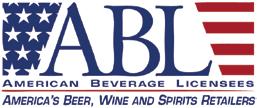ABL Dispatch — The Latest Industry News from Washington BY JOHN BODNOVICH, ABL EXECUTIVE DIRECTOR
W
e have now crossed the five-month mark since the unofficial start of COVID-19 business closures devastated so many onpremise businesses in states across the country. Wisconsin’s neighbor to the south, Illinois, saw its bars and taverns closed for 100 days. While other states were closed for shorter periods of time, some are reopening more slowly than others, putting a strain on bars, taverns, restaurants and other hospitality businesses that have been scraping and clawing to stay in business. There also seems to be a lot of arbitrary policymaking in states now, as governors, mayors and other officials grapple with how to slow coronavirus spread. Unfortunately, bars, taverns and restaurants find themselves in the crosshairs of many of these decisionmakers who are trying to “do something” — even if it is not based on any scientific evidence — to avoid the suggestion that they aren’t doing anything about COVID-19. This is leading to a patchwork of alcohol restrictions that are driving a stake through the heart of on-premise businesses everywhere. In Alabama, for example, bars cannot serve alcohol after 11 p.m. In Ohio, the cutoff is 10 p.m. In Puerto Rico, it is 7 p.m., even though food service is allowed until 10 p.m. The random nature of these regulations makes it challenging to create a uniform response or strategy. Some bars and their associations are turning to the courts and filing lawsuits to reopen with larger capacities, regular hours or indoor service. Others are working with state lawmakers to forge a path toward financial viability, supporting legislation that would allow them to regain a foothold. Public relations efforts also continue. Licensees point to limited (and nonuniform) contact tracing across the states as problematic when making policies that include sweeping limitations on bars. Without accurate and scientific data, and the public disclosure of that data, it is unclear what states are basing policy decisions on. And despite some bad actors, it appears from compliance check reports that the majority of bars are abiding state laws and regulations for social distancing and public health guidelines to prevent COVID-19 spread, including following Centers for Disease Control and Prevention (CDC) considerations. ABL continues to gather and share information with members, the public and policymakers, so that bars and taverns can
22
n
On Premise
n
SEPTEMBER/OCTOBER 2020
reopen as soon as possible, and under reasonable modifications to save state economies and small businesses.
COVID-19 – PHASE 4 RELIEF The last two months have been notable for what has not happened in Washington. Specifically, the House, Senate and administration have yet to coalesce around an additional COVID-19 relief package. The Senate left Washington the second week of August and will not return until after Labor Day. Earlier in August, House Majority Leader Steny Hoyer stated that — without a vote on a COVID relief package — the House of Representatives won’t reconvene until September 14 (though it now appears Speaker Nancy Pelosi may call the House back to vote only on United States Postal Service legislation). Unfortunately, with Congress home and focusing on political activities for the next few weeks, the best-case scenario for a COVID-19 deal is in September. Complicating matters is the need for Congress to pass legislation to fund the government before current funding runs out at the end of the fiscal year on September 30. There is now discussion about combining the two priorities and if that bill would be more of a collection of COVID-19 policy priorities as opposed to an expansive relief measure. For those keeping score at home, the Democrat-led House passed the $3 trillion Health and Economic Recovery Omnibus Emergency Solutions (HEROES) Act (H.R. 6800) on May 15. The Republican-led Senate introduced the $1 trillion Health, Economic Assistance, Liability Protection and Schools (HEALS) Act on July 27. The Senate bill is intended to be a starting point for Majority Leader Mitch McConnell and the White House in negotiations with the House. Phase 4 relief is to serve as follow-up legislation to the $2 trillion Coronavirus Aid, Relief and Economic Security (CARES) Act that was enacted on March 27. Republican priorities for Phase 4 legislation include cutting unemployment benefits, providing tax cuts and assuring liability protections for businesses. Democrats are focused on extending jobless aid, providing rental and mortgage assistance, and bolstering election security.
COVID-19 – STANDALONE BILLS & ISSUES Though the larger COVID bills have captured the attention of the national media, individual policy pieces are important markers of industry priorities, and are being worked on by ABL and other trade associations: • Real Economic Support that Acknowledges Unique Restaurant Assistance Needed to Survive (RESTAURANTS) Act (H.R. 7197; S.R. 4012) – This legislation, which has www.tlw.org






